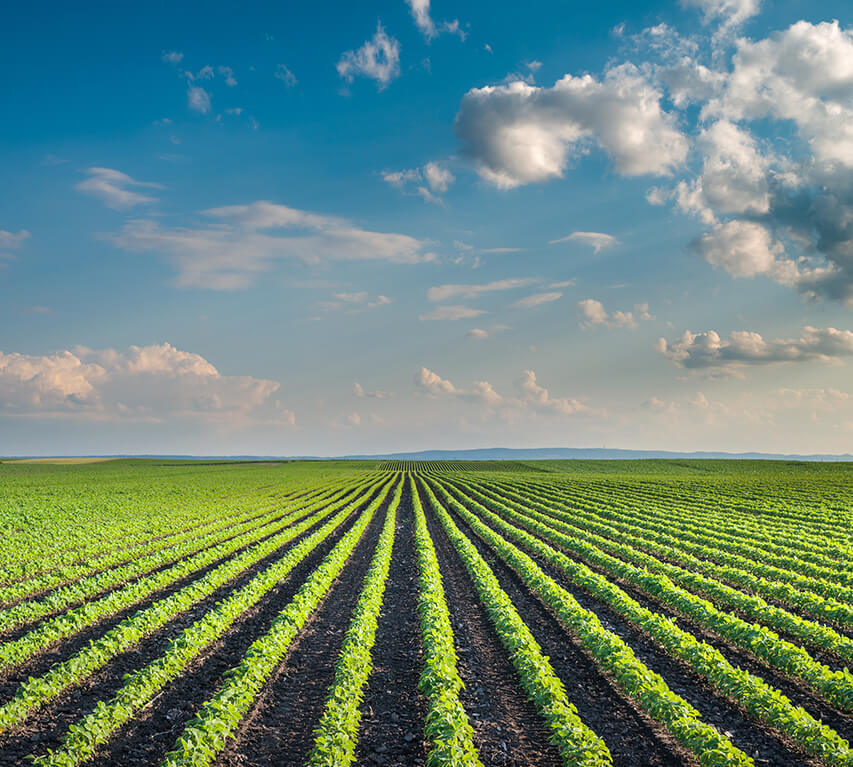LIKE many across the almond industry, the Costa family is busy expanding their almond growing enterprise, as well as their commercial hulling,
shelling and packing business. Today, brothers Phillip, Michael and Tony are the third generation at the helm after taking over from their father,
Don, who earlier followed the footsteps of his own father.
The family’s original property at Angle Vale in the Northern Adelaide Plains comprises 70 hectares, while their holding near Swan Reach in the
Riverland has expanded to 690ha, of which 485ha is approved for planting. The Costa Brothers hulling and shelling operation has also been
transferred to Swan Reach, where a new facility was recently commissioned and offers expanded capacity from handling 1500 tonnes to 5000t
of kernels per season.
The facility will process material from as far north as Mildura, down to a region south of Adelaide.While Costa Brothers is an approved huller and
sheller for Almondco and the family’s produce heads to the company, it is also an independent facility for Riverland Almonds and it packs and returns
produce to grower customers. Hull and shells are also sold for stockfeed. At Angle Vale, some of the family’s trees are 20 years old and they have been
replanting for the past five years. The orchard comprises Nonpareil, Carmel, Price and Keane varieties.At Swan Reach, the existing orchard comprised
trees ranging from 25 years old to 14 years old, including Nonpareil, Carmel, Fritz, Peerless and Ne Plus varieties.The family planted another 40ha in
2014 and 35ha in 2016.

Phillip Costa with the micro sprinkler irrigation system at his family’s almond orchard at Angle Vale. The trees had been shaken and
the fruit was drying prior to sweeping for harvest.
Phillip said they were planning for five stages of plantings with varieties including Nonpareil, as well as newer varieties Wood Colony and Monterey.
He said row spacing remained at 7 metres, but tree spacing was now at 5m, also enabled by the smaller, compact Wood Colony variety.

“The trends are toward a lighter coloured almond, and so the new varieties going in are lighter,’’ Phillip said.“They are also higher yielding
and are on better rootstocks – we are aiming for 1.4-1.5t per acre.“On the heavier land at Angle Vale, we use the hybrid rootstock GF677,
whereas up on the sandy country at Swan Reach, we use Nemaguard. The Wood Colony there is also on Cornerstone, which offers better vigour.’’
The Swan Reach property has required significant infrastructure upgrades, including drilling through cliffs to install two 650-millimetre pipes
.
Water quality and the conditions are much better at Swan Reach and they apply 10-14 megalitres/ha, while due to the salt content at Angle Vale,
they “shandy’’ recycled water and groundwater and apply it at 8-10ML/ha.
Soil surveys at Swan Reach showed it was unsuitable for drip irrigation and so micro sprinklers provide full cover in the orchard, while at Angle Vale,
30 per cent of the orchard floor is covered.
Nutrition is fertigated and the full cover irrigation system also allows them to dry spread fertilisers. Any fungicide applications also have nutrients added.
Phillip said for new plantings, they apply chicken compost and normally some gypsum, as well as a base fertiliser of MAP or an NPK product prior to planting
from late June or July.

Phillip with some of the irrigation and fertiliser injection infrastructure at the family’s Angle Vale orchard.
Nutrition strategy
Soil sampling followed by leaf sampling once growth begins to occur around September-October provides a guide on the effects of the base and pre-plant
fertiliser applications and sets the course for the nutrition strategy.
“Once the leaves start, we feed them. We irrigate and fertigate every three days,’’ Phillip said. “The nutrition really needs to be in proportion with the tree
and in balance with yield. You want fruiting growth, not just vegetative growth.’’ The Costas use Haifa’s Multi-KTM potassium nitrate throughout the season
and its Poly-FeedTM Greenhouse Grade NPK water soluble fertiliser from October onwards. Poly-Feed comprises pure plant nutrients, is free of sodium,
chloride and other detrimental elements, and is enriched with high levels of micronutrients. Safe for use with all irrigation and spraying systems, it provides
plants with optimal, balanced nutrition throughout the growing season, feeding them according to their needs and thereby maximising nutrient use efficiency.
 As highlighted in the Costa’s operations, Poly-Feed can also be used with water of varying quality, however a water test is always recommended, as well as
As highlighted in the Costa’s operations, Poly-Feed can also be used with water of varying quality, however a water test is always recommended, as well as
a jar test to ensure compatibility. “They have always been very good, high quality fertiliser products and we have no problems with their solubility. With cheaper
products, you can get problems,’’ Phillip said. “We also use calcium, urea and ammonium nitrate and we apply eight to 10 foliar treatments at Angle Vale and
six to eight in the Riverland, with the drier conditions there. “We use different blends at Angle Vale because of the water. The recycled water can be 1500 ppm
of salts and the ground water 600-700 ppm, whereas in the Riverland it is 200-300 ppm.
“Over an annual period, we apply 200 kilograms/ha of elemental N, 50kg/ha of P and 400kg/ha of K. Two-thirds of the nutrition is applied from July to November
and the last third is applied post-harvest, when the tree is storing reserves for the new season. “Our soils are fairly high in potassium, but we have previously
taken samples and thought no more would be required, but then the potassium hasn’t been available at critical demand periods.’’He said they use about half the
nutrition rates in year two and three before then applying the full program.



